The Russian half-track
Possibly the only (at our knowledge) armoured half-track used during the war was Russian. The concept seemed tailor-made for this continent of a country almost devoid of roads and on which the existing tracks were plagued by deep snow in winter, heavy dust in summer and deep mud in between. Nevertheless, based on the local Austin-Putilov, a concept first validated by the Tsar himself took its way to create the first of a kind. But despite its promises, the half-track concept never really resurfaced in soviet designs but as convertible tracks mated to conventional roadwheels, but later ironically the Germans, French and Americans were not long to see all the potential of the formula.The Kégresse tracks system
We alreay talked about the Kégresse system when introducting the M3 Half-Track. This concept of light, rubber tracks mater with an adequate bogie suspension system was invented by Adolphe Kégresse, a French military engineer, also inventor of the dual clutch transmission. He moved in 1905 to Saint Petersburg, improved the imperial car park, and created for the tsar a first private half-track car, which also received skis mated on the front roadwheels for the Tsar winter hunts. The "Russo-Balt "C24-30" was followed by a Packard Twin-6 with the same system, and eventually the wartime Austin-Kégresse.The Austin-Kégresse
These were conversions of some of the 60 Austin serie 3 chassis assembled locally at Putilovski Works, Saint Petersburg. However the production was halted by the 1917 october revolution, and resumed in March 1918 under the red army supervision. 33 were ultimately built before 1920, and about that total, 12 were converted to tracks. Hulls were identical to the regular Austin-Putilovs used by the Red Army, but the Kégresse system which replaced the rear axle comprised an articulated bogie, with a large drive wheel at one end and and idler at the other and, with several small guide wheels in between. The tracks was made of reinforced flexible rubber belt with metal treads to grip the ground. Thanks to this, the grip was excellent on all soft grounds, but the system barely tolerated high speeds and was quick to wear. The total was weight was 5.8-5.9 tons, road speed about 25 km/h and road range 100 km. In addition there were roller arms at the front and rear of the front axle and tracks, allowing the vehicle to climb vertical obstacles or trenches with ease.In action
As stated before, the Austin-Kégresse or Putilov-Kégresse was only used by the Red Army, as all 12 were delivered betwen July 1919 until March 1920, due to the lack of spare parts. They participated in a civil war against the white Russians, and the Polish–Soviet War in 1920-21 where most were destroyed or just left unrepaired due to the lack of resources in the 1920s.| Austin-Kegresse specifications | |
| Dimensions (L-W-H) | 4.9 x 2.03 x 2.84 m (16 x 6.8 x 9.4 ft) |
| Total weight, battle ready | 5.8 tons ( lbs) |
| Crew | 4-5 (driver, commander, gunners, mechanic) |
| Propulsion | Austin 4-cyl wc gas. 50 hp (37 kW) 9.5 hp/ton |
| Speed | 25 km/h (12 mph) |
| Operational range (road) | 100 km (60 mi) |
| Armament | 2 x 7.62 mm (0.3 in) Maxim machine-guns, 5000 rounds |
| Suspension | Front axle wheels, rear tracks |
| Armor | 6.5 mm (0.2 in) |
| Total production | 12 in 1920 |
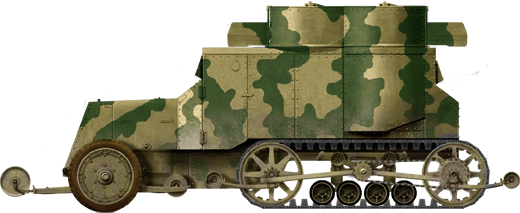
Camouflaged Austin-Kegresse with the trench-crossing extension rollers, 1922
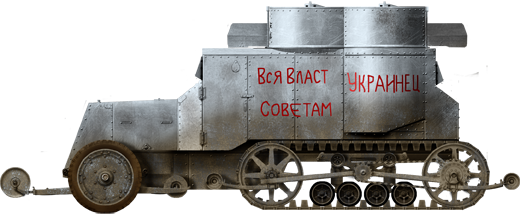
Austin-Kegresse «Ukrainets» in Zhytomyr, 1920, Polish-Russian war
Gallery
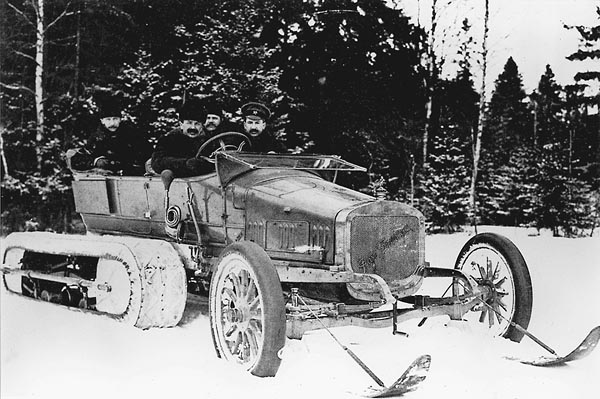
Russo-Balt C24-30 of the Tsar garage, designed in 1913.
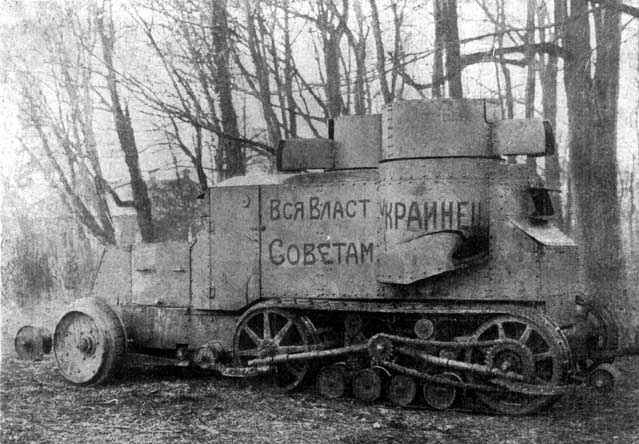
Austin-Kegresse «Ukrainets» in Zhytomyr, 1920, Polish-Rusian war
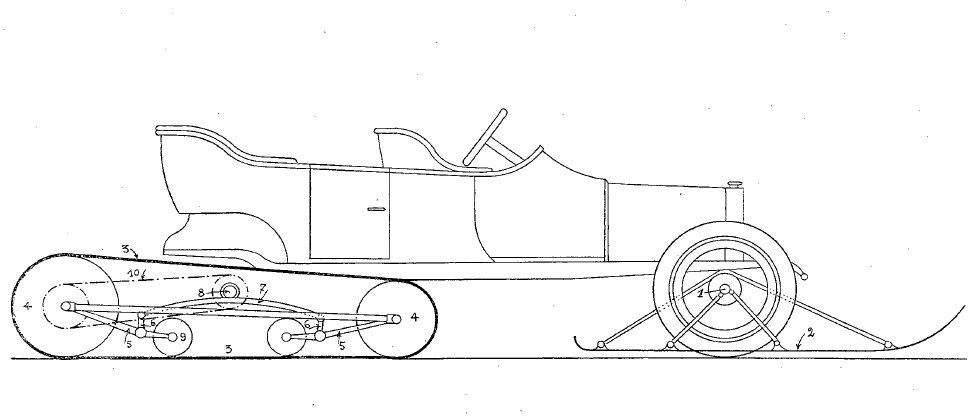
Kégresse 1913 design
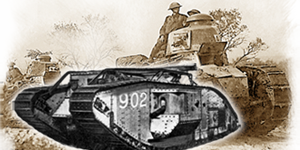
The Great War
 Austria-Hungary
Austria-Hungary Belgium
Belgium British Empire
British Empire France
France German Empire
German Empire Italy
Italy Russia
Russia USA
USAWW1 tanks posters

